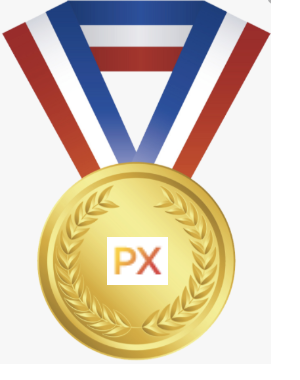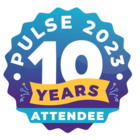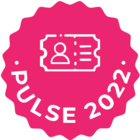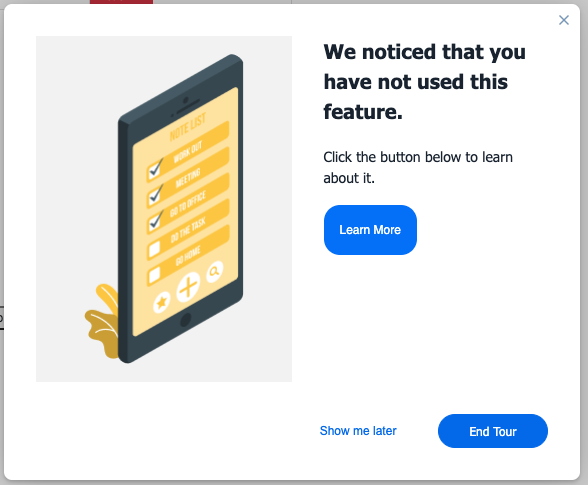Hi All!!!
There has been much discussion recently about how PX Segments work and how they can be used. Therefore, I wanted to share my experiences, insights, and recommendations in the hopes of helping many of our PX user to better understand this awesome PX feature.
First off, PX Segments do NOT work the same way as Audience Logic or Report Filters. In fact, you cannot currently use PX Segments in any PX Analytics reports at all … except for this option was recently added as a potential “Step” within our Funnel Analysis report.
VERY IMPORTANT: When you create a new PX Segment, it will NOT include any users at all … zero … even if some users match the Segment Logic criteria precisely. This is because users are only assigned to PX Segment(s) as they continue to use the PX-tracked application and achieve a “match” with the PX Segment Logic criteria. This assignment process begins once the PX Segment is created and there is currently no type of “backfill” operation performed on non-active users.
When a User matches the Segment Logic criteria of one of more of the pre-existing PX Segments, that PX Segment will be assigned/tagged to their PX User Profile and also include a behind the scenes date stamp … more on using this date stamp later. The only way to remove an assigned PX Segment from a user is to delete the PX Segment itself or delete the user. Below is a sample view from Audience Explorer and the PX User Profile that illustrates the PX Segments that have been assigned to a user.
When I explain PX Segments to our customers, I typically describe them as “moments of truth” or “milestones” for a user’s journey within the application. For example, one could build PX Segments similar to the following to track a user’s progress within the application:
“Trial Users” -> Segment Logic: UserType is “Trial”
“Full Users” -> Segment Logic: UserType is “Subscriber”
“Initial Value Moment Users” -> Segment Logic: UserType is “Subscriber” AND Feature “Totally Awesome Feature” Number of times used is “1”
“Power Users” -> Segment Logic: UserType is “Subscriber” AND Number of visits is greater than “25” AND Feature “Totally Awesome Feature #1” Number of times used greater than “10” AND Feature “Totally Awesome Feature #2” Number of times used is greater than “10”
“Centennial Users” -> Segment Logic: UserType is “Subscriber” AND Number of visits is “100”
The sample PX Segment Logic above is meant to be simple for this post, but can be highly customized and complex if necessary.
Now, let’s examine how to put PX Segments into action…
Arguably, one of the best use cases for PX Segments is within the Audience Logic of a PX Dialog, Slider, Guide, or Survey Engagement.
This is because they WILL work like a normal filter criteria within the Audience Logic, since users must be actively using the application to qualify for an Engagement to play and therefore these PX Segments will be assigned to those users in real time. And, if a user was previously tagged with a specific PX Segment and no longer matches that Segment’s criteria (e.g. their title, location, role, etc. has changed) when the Engagement Audience Logic is evaluated, they will not be included.
This method can also very much simplify creating repetitive Audience Logic, since one will only need to set the Segment Logic criteria up once in the PX Segment and then they can reuse that PX Segment over and over again in the Audience Logic of many PX Engagements.
Another really good use case is within the Audience Logic of PX Email Engagements, but you need to be particularly careful with this one.
Remember what I said above about PX Users only being assigned to PX Segments as they use the application? So, in this case the only users that will receive the Email must have ALREADY been assigned the PX Segment through application usage AFTER the PX Segment is created.
This often overlooked fact could lead to confusion and a much lower # of users receiving the emails than you would expect, since non-active users that match the Segment Logic criteria precisely may not be included as they have not been assigned the PX Segment yet.
The Segment options within PX Email Engagements are really powerful too, since you can not only target users that have been assigned or not assigned a specific PX Segment, but also target them based on WHEN they were assigned the PX Segment using the behind the scenes date stamp.
And finally, let’s put some of my sample PX Segments above into action!!!
For “Trial Users”, one could target these users with specific PX Guides to educate them on the value of the application and present PX Dialogs to encourage them to subscribe/pay. These users can also be targeted with sequential PX Emails, based on the how long they have been a Trial user, to further promote the value of using and subscribing to the application as well as to “bring them back” if they have not been using the application recently.
For “Full Users”, one could continue to target these users with more advanced, premium PX Guides to help them to get more value from the application. Additionally, these users can be targeted with PX Emails welcoming them as full users on the very day they converted from a Trial user to a Full user as well as with sequential, progressive PX Emails based on the how long they have been a Full user .
For “Initial Value Moment Users”, one could use a PX Dialog to congratulate the user in real time for this accomplishment and encourage them to do so much more in the application. Using PX Engagements in this way can provide positive reinforcement to your users, which is very important and highly effective for driving continued usage within your application.
For “Power Users”, one could target these users with special PX Customer Effort Score (CES) or Multi-question Surveys, to collect insights from your best and/or most experienced users. These may also be the users you might target with a PX Dialog to invite them to a special webinar/event or even a customer “Beta Program” that you might be offering. The options are many for targeting and leveraging these types of users for feedback, special handling, and growth opportunites.
For “Centennial Users”, one could target these users with a PX Dialog congratulating them on this momentous achievement. It could be a simple “Thank you so much, YOU ARE A ROCKSTAR!” message or even better, a medal/award of sorts, which is what I will also give everyone that made it this far in my post. :)

I hope you enjoyed and benefit from this post, but definitely leave your comments and additional use cases for PX Segments below.
Happy PX-ing!









